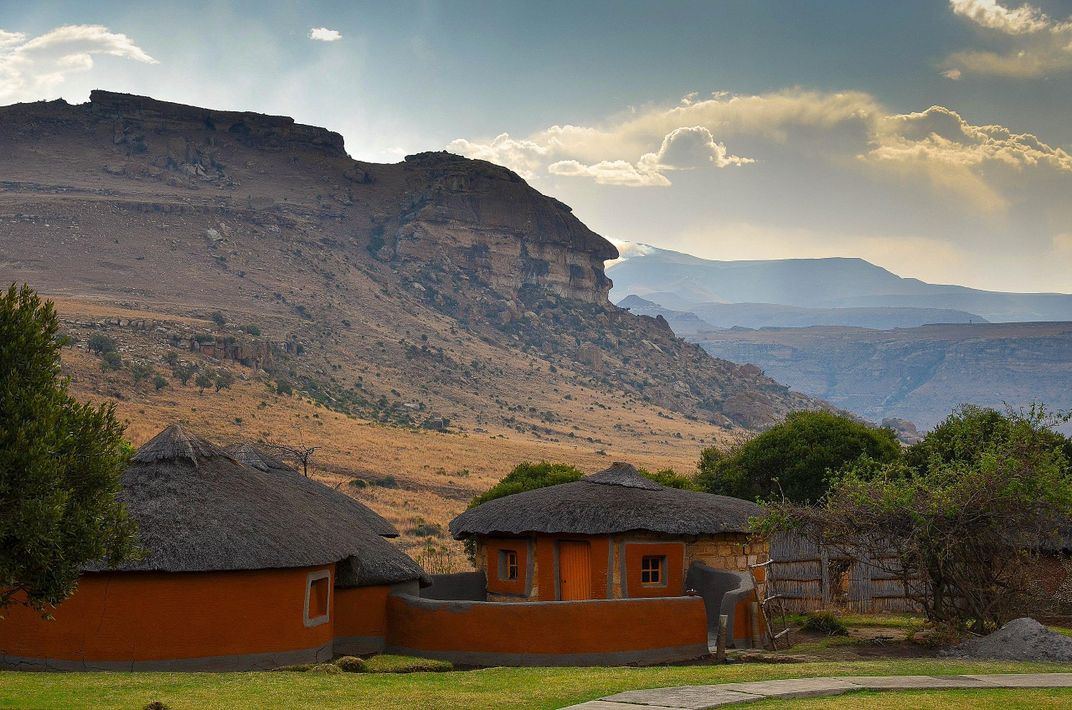Study Suggests At-Risk African Heritage Sites Are Often Overlooked
Researchers cite a “total lack of quantifiable data on the impacts of climate change on heritage in sub-Saharan Africa”
:focal(2056x1332:2057x1333)/https://tf-cmsv2-smithsonianmag-media.s3.amazonaws.com/filer/a9/0a/a90ab564-d583-49d3-a577-c797d59831c7/gettyimages-986734758.jpg)
Climate change poses a significant threat to cultural and architectural heritage sites around the world—but the majority of relevant research centers solely on the losses faced by wealthier countries. In 2017, for instance, a study found that just one percent of research on climate change’s effects on heritage focused on iconic landmarks in Africa.
A new survey published in the journal Azania: Archaeological Research in Africa strives to addresses this shortage by highlighting at-risk heritage sites and practices across the African continent.
“Without significant intervention some of Africa’s most important heritage will be lost as a result of the direct and indirect impacts of climate change over the coming decades,” write co-authors Joanne Clarke, Elizabeth Edna Wangui, Grace W. Ngaruiya and Nick Brooks for the Conversation. “… The next ten years will be a critical period in which research agendas can be developed that will have a practical application for the management of African heritage in the face of climate change.”
The group’s paper analyzes a range of case studies from countries in West, East and North Africa. Some—like the wetlands and lagoons of Ghana, Togo, Bénin and Nigeria—represent natural heritage vulnerable to coastal erosion. Their ecosystems are essential for maintaining biodiversity, but storm surges and rising sea levels present a looming threat. Erosion has also severely damaged Guinean coastal forests.

In Kenya, the largely human-led destruction of mangrove forests threatens Unesco World Heritage Site Lamu Old Town, which has been continuously inhabited for more than 700 years.
The forests “protect the island from flooding,” Clarke, an archaeologist at the University of East Anglia, tells BBC News’ Pablo Uchoa.
She adds, “[A] lot of what we would call natural heritage is a protection for cultural heritage. And as we destroy the natural heritage, we also leave cultural heritage sites exposed.”
Rising seas also present problems for heritage locations like Mozambique’s Ibo Island, Shanga and Pate islands in Kenya, and the ruins of Kaole in Tanzania, according to the paper. Built less than 33 feet above sea level, these sites’ low elevation and placement atop of coral, sand or mud puts them at risk.
Clarke studies the rate of erosion sparked by rising waters at Sudan’s Suakin Island. Once a bustling port city, Suakin served as a stopping point for 19th-century African slave traders sailing across the Red Sea.
“What we do know is that the Red Sea coast will be impacted in the coming decades, which means what currently survives will be lost [without intervention],” the archaeologist tells BBC News.
Rising sea levels and coastal erosion aren’t the only threats faced by African heritage sites. The team also identifies factors like increasing humidity, which encourages bacteria and algae to grow over rock art, as well as flash floods and more extreme cycles of hot and cold weather. Rock art at Golden Gate Highlands National Park in South Africa, for example, hosts “luxuriant growth” of lichen linked to “intense biodeterioration,” according to a 2012 study.
/https://tf-cmsv2-smithsonianmag-media.s3.amazonaws.com/filer/77/73/77739552-0bcc-4089-ad5a-4014d98c88b7/6564662409_688dab4b55_c.jpg)
In Djenné, Mali, the unpredictable climate and reduced rainfall have degraded the quality of mud bricks used to construct the city’s monumental buildings. Locals previously relied on calcified fish bones to make the bricks more resistant to climate extremes, but the area’s fish stocks have become increasingly scarce in recent years.
To maintain Djenné’s mud-brick structures, residents must import materials from farther away, increasing costs and making traditional fixes less readily available. Today, many modern masons make repairs with materials like concrete and clay bricks.
As Clarke tells BBC News, “[C]limate change has the ability to be a threat multiplier [in Djenné].”
“It has indirect impacts which are arguably more serious than the direct impact,” she explains.
Climate change has impacts beyond tangible heritage sites, the researchers write in the paper. Intangible heritage, like traditional ways of life as pastoralists, is also at risk.
“Heritage is often viewed through the lens of what can be seen—for example, disappearing coastlines with their famous archaeological sites—but Africa’s unseen heritage is just as important to preserve, and arguably more vulnerable to a changing climate,” the authors add.
Expanding on this line of thinking in the Conversation, the researchers conclude, “Resetting the research agenda towards a sustainable heritage in the face of climate change will not only enable reengagement with the past, but will help mitigate the impacts of climate change beyond heritage.”